|
INVENTORY OF PC-DOCS, JAN-JUNE 1932
NAVIGATION BAR FORTHCOMING . . .
|
|
32.02.04. Gray & McAfee,
Patrol & Combat Reports (Neptune Mine
Area)
|
|
P C - D O C S :
P A T R O L & C
O M B A T R E P O R T
S |
|
thru 1927 |
1928 |
1929 |
1930 |
1931 |
1932 |
1933 + |
|
1
|
2
|
3
|
4
|
5
|
6
|
7
|
8
|
9
|
10
|
11
|
12
|
|
NOTE:
This is an especially significant series of
reports, in part because of the large cache of
Sandinista correspondence captured by Gray's patrol. A
list-in-progress of this correspondence appears
at the bottom of this page.
||
NOTA:
Este contacto es especialmente
significativo, en parte en consecuencia del gran caché de
correspondencia Sandinista capturado por la
patrulla de Gray. Una lista-en-progreso de esta
correspondencia aparece al fondo de esta página.
Many thanks to Mr. Richard Siu, originally
from Bluefields, for his transcription of the
English, and to Ms. Linda Pudder, a US citizen
currently residing in the Department of Rivas,
for her translation of these documents into
Spanish. || Muchas gracias a
Sr. Richard Siu, originario de Bluefields, por
su transcripción del Inglés, y a Sra. Linda Pudder, una
norteamericana que vive ahora en el departamento
de Rivas, por su traducción de estes
documentos al español.
|
|
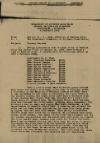 GUARDIA NACIONAL DE NICARAGUA GUARDIA NACIONAL DE NICARAGUA
DEPARTMENT OF SOUTHERN BLUEFIELDS
BLUEFIELDS, NICARAGUA
4 FEBRUARY 1932.
From:
2nd Lt. E. T. Gray, District of Neptune
Mine.
To: The
Department Commander of Southern
Bluefields.
Subject: Contact report.
1. Having information that a large group
of bandits which had sacked Tunky on
January 28, 1932, were cutting a road to
Waspook river, I cleared with the
following patrol at 1200 1 February,
1932.
Lieutenant E. T. Gray.
Sgt. Constine Casanova #2701
Cabo Eliseo Vargas, #2130
Raso Acdana Rodolfo #2485
Raso Emilio Alfredo #2272
Raso Alaniz Gumercindo #3084
Raso Domingo Avila #4458
Raso Chavarría Faustino #3742
Raso Chavas Rafael #4746
Raso Garzón Jesús #4809
Raso Gomez Leonardo #3283
Raso Alejandro Gorgona #3489
2 civil guides. 2 pack animals.
Patrol took a north east direction going
through Eden Mines and camped in a small
house near to Biltigni river, a
tributary of the Waspook. 2 February
cleared at 0600. Here it was necessary
to cut trail to intercept the route
taken by the bandits column. Cut trail
until 1100 when a distinct trail of the
bandits was found. This was followed for
a short distance where it entered into
the Biltigni River. Here the bandits had
followed the river banks, crossing where
necessary. The Biltigni river is small
and rapid. The trail indicated a very
large number of bandits. About 1200 a
clearing was entered but which had not
been under cultivation for some time
being grown up higher than the head with
weeds. Here partly constructed bandit
camps were found but no bandits. We
proceeded cautiously seeing fresh
tracks. The banks of the river were
steeper and the two guides, six guardias
and the mules were letf after we cleared
the first bandit camp, because they
could not follow the trail. When I had
proceeded about a half mile down the
river, a bandit approached the river
bank from the opposite side with a balsa
log. (Which were used in construction of
rafts). This was the first man we had
seen. He was about 100 yards ahead of
us. We proceeded now very slowly and
quietly. The river bank had dense cover
which was fortunate. Our presence was
not discovered. [p. 2]
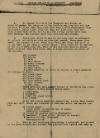 2. We opened fire with the Thompson and
B.A.R. at about 20 yards. The surprise
of the bandits was complete and our
position so close that they fled with
very little resistance. They returned a
feeble fire from the camp and some more
from the high ground back of it, but in
all the firing lasted less than five
minutes. The bandits used only shotguns
and rifles.
2. We opened fire with the Thompson and
B.A.R. at about 20 yards. The surprise
of the bandits was complete and our
position so close that they fled with
very little resistance. They returned a
feeble fire from the camp and some more
from the high ground back of it, but in
all the firing lasted less than five
minutes. The bandits used only shotguns
and rifles.
3. There were about 75 men in the camp
when we attacked. We crossed the river
as soon as fire had ceased. There were
five dead. The amount of loot taken from
Tunky was large and most of it lay here
in the camp in rubber sacks. This could
not be carried as our mules were worn
out. Most of the articles were in rubber
sacks of which they were about 100. A
rough estimate is given of the content.
100 trousers
100 shirts
50 hats
50 pairs shoes
25 women dresses
75 blankets
20 rain coats
A great quantity of cloth in pieces.
A great quantity of cooking utensils
200 pound beans
300 pound rice
200 pound sugar
300 tins canned food
20 lbs. coffee
5 lbs. tea.
These articles were either burned or
thrown in the river.
The amount of
Military articles were:
1 rifle Krag
3 shotguns
4 clips for
Lugar pistol
½ lb. powder.
About 200 rounds assorted ammunition,
mostly Krag Combat 1930 and 1917, which
was reissued to Guardia after the second
combat.
36 rounds Lugar
6 round brass
shotgun 12 and 16 gauge, Remington
reloaded
12 rounds 38 special pistol
Winchester
30 Machetes. 2 pack bulls.
(Killed in combat)
5 bandits killed.
(Counted).
Correspondence.
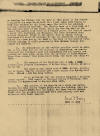 4. When we had destroyed everything, I
returned and picked up the pack animals
and guides. The guardia left behind had
came up . . . [p. 3] . . . on hearing
the firing, but too late to take place
in the combat. I followed the same route
back that I had taken down hoping to
find some bandits at the first camp. The
patrol was ambushed shortly, before we
arrived. The bandits were on a high bank
on the opposite side of the river, while
the Guardia were in the clear. The
patrol took cover in a banana grove. The
bandits opened a heavy fire including
one Thompson. The fire increased when
another Thompson fired on the patrol
from an angle. Firing continued for
about 20 minutes; it was not practical
to advance across the river and up the
bank in the face of the bandits fire.
Careful placing of rifle grenades by
Raso Acdana finally dislodged the
bandits.
4. When we had destroyed everything, I
returned and picked up the pack animals
and guides. The guardia left behind had
came up . . . [p. 3] . . . on hearing
the firing, but too late to take place
in the combat. I followed the same route
back that I had taken down hoping to
find some bandits at the first camp. The
patrol was ambushed shortly, before we
arrived. The bandits were on a high bank
on the opposite side of the river, while
the Guardia were in the clear. The
patrol took cover in a banana grove. The
bandits opened a heavy fire including
one Thompson. The fire increased when
another Thompson fired on the patrol
from an angle. Firing continued for
about 20 minutes; it was not practical
to advance across the river and up the
bank in the face of the bandits fire.
Careful placing of rifle grenades by
Raso Acdana finally dislodged the
bandits.
5.
No examination of the bandits’ position
could be made, due to the river and our
own shortage of ammunition, as
practically all the automatic arms and
ammunition and all except one grenade
had been used, along with the majority
of rifle ammunition. This contact took
place about 1600, the first one being at
1200.
6.
The weapons of the Guardias were 1 BAR.
1 TSMG. 1 Rifle with grenade discharge;
9 Rifles Krag; 1 Pistol 45 and 1 Pistol
38.
The bandits were armed with 2 TSMG.
Rifles, pistols, and shotguns. Guardia
expended 150 rounds ammunition
Springfield 1906. 120- 45. 600 New Krag
Combat.
It is estimated that the bandits
expended a slighter lesser amount. 1830
camped on Beltigni River. 3 February;
0530 cleared for and arrived to Neptune
Mine 1200.
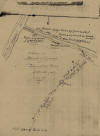 7. The conduct
of the Guardia as a whole was
satisfactory but Cabo Eliseo Vargas
#2130 with the T.S.M.G. Raso Gumercindo
Alaniz #3084 with the B.A.R. and Raso
Rodolfo Acdana #2485 with the grenade
discharger were particularly cool and
effective with their weapons.
7. The conduct
of the Guardia as a whole was
satisfactory but Cabo Eliseo Vargas
#2130 with the T.S.M.G. Raso Gumercindo
Alaniz #3084 with the B.A.R. and Raso
Rodolfo Acdana #2485 with the grenade
discharger were particularly cool and
effective with their weapons.
(signed) EARL T. GRAY
RG127/202/14
|
|
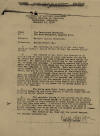 DEPARTMENT
OF SOUTHERN BLUEFIELDS DEPARTMENT
OF SOUTHERN BLUEFIELDS
GUARDIA NACIONAL DE NICARAGUA
BLUEFIELDS, NICARAGUA
FEBRUARY 15, 1932.
From:
The Department Commander.
To:
The Area Commander, Eastern Area.
Subject:
Contact Report. Forwarded.
Reference: Harlan
Pefley map.
1.
The contacts as reported by Lt. Gray
took place at (110.6 – 310.3) Harlan
Pefley, the second (110.7 – 310.2).
2.
The conduct of Lt. Gray, who cleared on
my orders (due to there being no other
available officers my patrol and myself
had just returned and were nearly
exhausted. Lt. Rodriguez was sick), was
of the highest order of skill and
courage. I personally covered the ground
where both contacts took place and the
defeat of the bandits was complete in
both contacts. Such additional property
taken from the bandits, and destroyed by
my patrol later, was due to the initial
contacts of Lieutenant Gray.
One additional dead bandit was found
which made six killed by Lt. Gray patrol
in the first contact. While no estimate
was made of the wounded two Indians who
being held captives, and who escaped
during the contacts stated that Simon
Gonzalez and Julio Castro were wounded.
This is not certain by any means but is
merely added as a matter of interest.
3.
The Jefes were Pedro Irías, Simón
Gonzalez, Perfecto Chavarría and Julio
Castro, a new but blood thirsty addition
to the bandit forces.
4. The complete forces of
the bandits and an estimate of the goods
destroyed make it certain that the
bandits did not profit by their robbery
of Tunky except for clothing they may
have worn away. I consider this the most
severe blow the bandits have been struck
on this coast, as to loss of stolen
property, and to my belief the largest
recovery of stolen loot in the history
of the Guardia. The action of Lt. Gray
and the patrol deserve the highest
commendation.
(signed) RALPH D MCAFEE
----------------------------------------------------
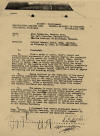 Second
Endorsement Second
Endorsement
HEADQUARTERS EASTERN AREA
GUARDIA NACIONAL DE NICARAGUA
Bluefields, Nicaragua
18 February 1932.
From: Area Commander,
Eastern Area.
To: The
Jefe Director, Managua.
Subject: Contact Report, Lieut. Gray,
(R), G.N. on February 2, 1932, at
BILTIGNE RIVER.
1. Forwarded.
2. From a study of Lieut.
Gray’s report and from personal
conversation with Captain McAfee, who
explained satisfactorily the reason for
sending Lieut. Gray, (Radio), G.N. on
the patrol, too much credit cannot be
given for the action of Lieut. Gray in
boldly attacking first the large main
camp of the bandits with only six (6)
Guardia, completely surprising and
routing the bandits, seizing and
destroying their stolen loot of several
raids, capturing a mass of papers and
killing six and wounding others.
3. Being rejoined by the
remainder of his patrol and having
completely dispersed the main group,
Lieut. Gray promptly turned back on the
trail, suspecting the presence of a rear
guard, and was ambushed, but fortunately
without any casualties. After a spirited
long range fire action the bandits
scattered and vanished.
4. The manner in which
Lieut. Gray led and handled his small
patrol, the boldness of his attack
against such a large force, and the
results attained receive my admiration;
he and his patrol deserve the highest
commendation. Such conduct on the part
of the officers and enlisted men of the
Guardia Nacional and especially on the
part of Lieut. Gray, who is not a line
officer, and subject to combat and
patrol duty, cannot fail to leave its
imprint on the morale and future of the
Guardia Nacional.
5. I recommend that
Second Lieutenant Earle T. Gray,
(Radio), Guardia Nacional, be officially
commended in official orders for his
conduct and splendid results.
(signed) L. L. LEECH
RG127/202/14
|
|
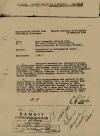 HEADQUARTERS EASTERN AREA GUARDIA
NACIONAL DE NICARAGUA
HEADQUARTERS EASTERN AREA GUARDIA
NACIONAL DE NICARAGUA
Bluefields, Nicaragua
18 February 1932
From:
Area Commander, Eastern Area
To:
The Jefe Director, Managua
Subject:
Transmittal of untranslated bandit
correspondence.
Enclosures: ( 25 )
1.
Forwarded herewith are twenty-five
pieces of untranslated bandits
correspondence (excluding pictures and
envelopes), memorandums, orders,
personal letters, and newspaper
clippings. Some of this correspondence
originated from Pedro A. Irias, E.
Carvajal, I. Perfecto Chavarria, R. R.
Hernandez, Carlos Salgado, Coronel
Candelario, and bandit sub-jefes.
2.
This correspondence was captured by 2nd
Lieut. Earle T. Gray, (Radio), G.N., in
his contact with bandit group at
BILTIGNE RIVER, on February 3, 1932. A
part of this correspondence was brought
to Neptune Mine by Lieut. Gray, G.N.,
and a large part was returned to Neptune
Mine by Captain Ralph D. McAfee during
his patrol to scene of BILTIGNE RIVER
contact, on February 5, 1932.
(signed) L. L. LEECH
RG127/202/14
|
|
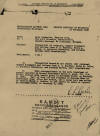 HEADQUARTERS
EASTERN AREA GUARDIA
NACIONAL DE NICARAGUA HEADQUARTERS
EASTERN AREA GUARDIA
NACIONAL DE NICARAGUA
Bluefields, Nicaragua
18 February 1932
From: Area
Commander, Eastern Area
To:
The Jefe Director, Managua
Subject: Transmittal of
original, signed documents and letters
from A. C. Sandino, Pedro A. Irias, I.
Perfecto Chavarria, and Abraham Rivera,
with translations.
Enclosures: (12)
1. Transmitted herewith are twelve (12)
original, signed documents and letters
from A. C. Sandino, Pedro A. Irias, I.
Perfecto Chavarria, and Abraham Rivera,
with translations.
2. This correspondence is the more
important of papers captured by Second
Lieutenant Earle T. Gray, (R), G.N., in
his contact with bandit group at
BILTIGNE RIVER, on February 3, 1932.
Part of this lot was returned to Neptune
Mine by Lieutenant Gray, after his
action, and a large part was seized by
Captain Ralph D. McAfee, in his patrol
to scene of contact at BILTIGNE RIVER,
on February 5, 1932.
(signed) L. L. LEECH
RG127/202/14
|
|
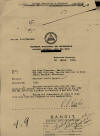 GUARDIA
NACIONAL DE NICARAGUA GUARDIA
NACIONAL DE NICARAGUA
CUARTEL GENERAL, AREA DEL ESTE
BLUEFIELDS, NICARAGUA
22 March 1932.
From: The Area Commander, Eastern Area.
To: The Jefe Director, Managua.
Subject: Captured bandit papers.
Enclosures: (17)
1. Enclosed herewith are more and very
eluminating papers, captured from the
bandits by Lt. Gray (R), GN. after his
contacts on February 2 and 3rd, 1932.
2. Copies and translation of some of
these have been made and retained at
this headquarters.
(signed) L. L. LEECH
RG127/202/14
|
|
 GUARDIA
NACIONAL DE NICARAGUA GUARDIA
NACIONAL DE NICARAGUA
DEPARTAMENTO DE BLUEFIELDS SUREÑO
BLUEFIELDS, NICARAGUA
4 de Febrero de 1932.
De: 2o Teniente E. T. Gray, Distrito de
la mina Neptuno.
A: El Departamento Comandante del
Bluefields Sureño.
Asunto: Informe de contacto.
1. Contar
con la información que un gran grupo de
bandidos que habían despedido Tunky el
28 de enero, 1932, estaba cortando una
carretera al Río Waspook, despejé con la
siguiente patrulla a las 12h00 el 1 de
Febrero 1932.
El Teniente E. T. Gray.
El Sargento Constine Casanova #2701
Cabo Eliseo Vargas, #2130
Raso Acdana Rodolfo #2485
Raso Emilio Alfredo #2272
Raso Alaniz Gumercindo #3084
Raso Domingo Ávila #4458
Raso Chavarría Faustino #3742
Raso Chavas Rafael #4746
Raso Garzón Jesús #4809
Raso Gómez Leonardo #3283
Raso Alejandro Gorgona #3489
2 Guías civiles. 2 animales de carga.
La
patrulla tomó la dirección noreste
atravesando las minas Eden y acampó en
una pequeña casa cerca del Rio Biltigni,
un tributario del Waspook. El 2 de
febrero se despejó a las 06h00. Aquí fue
necesario cortar un camino para
interceptar la ruta tomada por la
columna de bandidos. Se cortó pista
hasta 11h00 cuando se encontró una clara
senda de los bandidos. Se lo siguió por
una corta distancia donde entró en el
Río Biltigni. Aquí los bandidos habían
seguido los bancos del río, cruzando en
caso necesario. El Río Biltigni es
pequeño y rápido. El sendero se indicaba
un número muy grande de bandidos.
Alrededor de 12h00 se entró a un claro,
pero que no había sido cultivada desde
hace algún tiempo por haber sido crecido
las malas hierbas hasta una altura
superior a la de la cabeza. Aquí se
encontró campamentos de bandidos medio
construidos pero no se encontraron
ningunos bandidos. Avanzamos con
precaución viendo huellas frescas. Los
bancos del río eran más empinados y las
dos guías, seis guardias y las mulas
fueron dejado después de despejar el
primer campamento bandido, porque no
podían seguir la senda. Cuando me había
bajado a un kilómetro por el rio, un
bandido se acercó a la orilla del río en
el lado opuesto con un tronco de balsa.
(Que se utiliza en la construcción de
balsas). Este fue el primer hombre que
habíamos visto. Él estaba alrededor de
100 metros por delante de nosotros.
Procedimos ahora muy lentamente y
silenciosamente. La orilla del río tenía
una densa cubierta afortunadamente.
Nuestra presencia no fue descubierto.
[P. 2]
 2. Abrimos fuego con el Thompson y el
rifle automático Browning a unos 20
metros. La sorpresa de los bandidos fue
total y nuestra posición tan de cerca
que huyeron con muy poca resistencia.
Regresaron un débil fuego del campamento
y algunos más de la tierra alta detrás,
pero en todo los disparos duraron menos
de cinco minutos. Los bandidos
utilizaron sólo escopetas y rifles.
2. Abrimos fuego con el Thompson y el
rifle automático Browning a unos 20
metros. La sorpresa de los bandidos fue
total y nuestra posición tan de cerca
que huyeron con muy poca resistencia.
Regresaron un débil fuego del campamento
y algunos más de la tierra alta detrás,
pero en todo los disparos duraron menos
de cinco minutos. Los bandidos
utilizaron sólo escopetas y rifles.
3. Habían
unos 75 hombres en el campamento cuando
les atacamos. Cruzamos el río tan pronto
como el fuego había cesado. Hubo cinco
muertos. La cantidad de botín de Tunky
era grande y la mayoría estaba aquí en
el campamento en sacos de goma. Esto no
se podría ser llevado ya que nuestras
mulas estaban gastadas. La mayoría de
los artículos estaban en bolsas de goma
de los cuales eran alrededor de 100. Se
da una estimación aproximada de los
contenidos.
100 Pantalones
100 Camisetas
50 Sombreros
50 Pares de zapatos
25 Vestidos de mujeres
75 Mantas
20 Capas de lluvia
Una gran cantidad de tela en trozos. Una
gran cantidad de utensilios de cocina
200 libras Frijoles
300 libras Arroz
200 libras Azúcar
300 Latas conservas
20 lbs. Café
5 lbs. té
Estos
artículos fueron quemados o arrojados al
río.
La cantidad de artículos militares
fueron:
1 Fusil Krag
3 Escopetas
4 Clips de pistola Lugar
½ lb. polvo.
200 Rondas de municiones variadas, en su
mayoría Krag Combat 1930 y 1917, que se
dieron al Guardia después del segundo
combate.
36 Rondas Lugar
6 Rondas de escopeta bronce calibre 16 y
12, Remington recarga
12 Rondas 38 pistola especial Winchester
30 Machetes. 2 toros de carga. (Matados
en combate)
5 Bandidos matados. (Contado).
Correspondencia.
 4. Cuando habíamos destruido todo lo que
había, regresé y recoger los animales de
carga y guías. La guardia civil había
venido . . . [P. 3] . . . Al oír los
disparos, pero demasiado tarde para
participar en la lucha. Seguí el mismo
camino de vuelta que yo había tomado
abajo esperando a encontrar algunos
bandidos en el primer campo. La patrulla
fue emboscada en breve, antes de que
llegáramos. Los bandidos estaban en un
banco alto en el lado opuesto del río,
mientras que el guardia en el claro. La
patrulla se protegió en una bananera.
Los bandidos abrieron un fuego intenso
incluyendo una Thompson. El fuego
aumentó cuando otra Thompson disparó
contra la patrulla desde un ángulo.
Siguieron disparando durante unos 20
minutos; no fue práctico avanzar sobre
el río y trepar el banco enfrente del
fuego de los bandidos. Una cuidadosa
colocación de granadas de fusil por Raso
Acdana finalmente desalojó los bandidos.
4. Cuando habíamos destruido todo lo que
había, regresé y recoger los animales de
carga y guías. La guardia civil había
venido . . . [P. 3] . . . Al oír los
disparos, pero demasiado tarde para
participar en la lucha. Seguí el mismo
camino de vuelta que yo había tomado
abajo esperando a encontrar algunos
bandidos en el primer campo. La patrulla
fue emboscada en breve, antes de que
llegáramos. Los bandidos estaban en un
banco alto en el lado opuesto del río,
mientras que el guardia en el claro. La
patrulla se protegió en una bananera.
Los bandidos abrieron un fuego intenso
incluyendo una Thompson. El fuego
aumentó cuando otra Thompson disparó
contra la patrulla desde un ángulo.
Siguieron disparando durante unos 20
minutos; no fue práctico avanzar sobre
el río y trepar el banco enfrente del
fuego de los bandidos. Una cuidadosa
colocación de granadas de fusil por Raso
Acdana finalmente desalojó los bandidos.
5. No se
podía hacer ningún examen de la posición
de los bandidos, debido al río y a
nuestra propia falta de municiones, ya
que prácticamente todas las armas
automáticas y municiones y todo menos
una granada había sido utilizada, junto
con la mayoría de munición de fusil.
Este contacto ocurrió a las 16h00, la
primera a las 12h00.
6. Las
armas de los Guardias fueron de 1 rifle
automático Browning. 1 metralleta
Thompson. 1 Rifle de descarga con
granada; 9 fusiles Krag; 1 pistola 45 y
1 pistola 38.
Los
bandidos fueron armados con 2
metralletas Thompson. Rifles, pistolas y
escopetas. Guardia gastó 150 cartuchos
de municiones Springfield 1906. 120- 45.
600 Krag Combat nuevos.
Se estima
que los bandidos gastaron una cantidad
ligeramente menor. A las 18h30 acampamos
en el Río Beltigni. 3 de Febrero
despejamos a las 05h30, y llegamos a la
mina Neptuno a las 12h00.
 7. El comportamiento de la Guardia en su
conjunto fue satisfactoria pero Cabo
Eliseo Vargas #2130 con la metralleta
Thompson, Raso Gumercindo Alaniz #3084
con el rifle automático Browning, y Raso
Rodolfo Acdana #2485 con la granada
descargador fueron particularmente
calmos y eficaz con sus armas.
7. El comportamiento de la Guardia en su
conjunto fue satisfactoria pero Cabo
Eliseo Vargas #2130 con la metralleta
Thompson, Raso Gumercindo Alaniz #3084
con el rifle automático Browning, y Raso
Rodolfo Acdana #2485 con la granada
descargador fueron particularmente
calmos y eficaz con sus armas.
(Firmado) EARL T. GRAY
RG127/202/14
|
|
 DEPARTAMENTO
DE BLUEFIELDS SUREÑO DEPARTAMENTO
DE BLUEFIELDS SUREÑO
GUARDIA NACIONAL DE NICARAGUA
BLUEFIELDS, NICARAGUA
15 de Febrero de 1932.
De: El
Comandante del Departamento.
A: El
Comandante de la zona, zona oriental.
Asunto: Informe de contacto. Reenviado.
Referencia: mapa Harlan Pefley.
1. Los
contactos según lo reportado por el
Teniente Gray ocurrieron en (110,6 -
310,3 ) Harlan Pefley, el segundo (110,7
- 310,2).
2. La
conducta del Teniente Grey, quien
despejó según mis ordenes (debido a que
no habían otros oficiales disponibles mi
patrulla y yo acabamos de volver y
estábamos casi agotados. El Teniente
Rodríguez estaba enfermo), fue de la más
alta calidad de habilidad y valentía. Yo
cubrí personalmente el suelo donde ambos
contactos se llevó a cabo y la derrota
de los bandidos fue completo en ambos
contactos. La propiedad adicional de los
bandoleros, y destruido por mi patrulla
más tarde, fue debido a los contactos
iniciales del Teniente Gray.
Se encontró un bandido muerto adicional
que hizo seis matados por la patrulla
del Teniente Grey en el primer contacto.
Aunque no se había hecho ninguna
estimación de los heridos dos indios,
quienes fueron cautivos y que se fugaron
durante los contactos, indicaron que
Simón González y Julio Castro resultaron
heridos. Esto no es cierto del todo,
pero está simplemente añadido como un
asunto de interés.
3. Los
Jefes eran Pedro Irías, Simón González,
Perfecto Chavarría y Julio Castro, un
nuevo pero sediento de sangre adición a
la fuerza de bandidos.
4. Toda
la fuerza de los bandidos y una
estimación de los bienes destruidos lo
hace seguro que los bandidos no
aprovecharon de su robo de Tunky salvo
la ropa que se les puedan haber puesto.
Esto lo considero ser el golpe más
severo que los bandidos han sido
golpeado en esta parte de la costa, como
a la pérdida de los bienes robados, y a
mi juicio la mayor recuperación de botín
oculto en la historia de la Guardia. La
acción del Teniente Grey y la patrulla
merecen el encomio más alto.
(Firmado)
RALPH D MCAFEE
----------------------------------------------------
 Segunda
Aprobación Segunda
Aprobación
CUARTEL GENERAL DE LA ZONA ORIENTAL
GUARDIA NACIONAL DE NICARAGUA
Bluefields, Nicaragua
18 Febrero 1932.
De: Comandante de la zona, zona
oriental.
A: El Jefe Director, Managua.
Asunto: Informe de Contacto, Teniente.
Grey, (R), G. N. el 2 de Febrero, 1932,
en RÍO BILTIGNE.
1.
Reenviado.
2. En un
estudio del Teniente. Informe de Grey y
de conversación personal con el Capitán
McAfee, quien ha explicado
satisfactoriamente el motivo de haber
mandado al Teniente. Grey, (Radio), G.
N. a la patrulla, demasiado crédito no
puede ser dada por la acción del
Teniente Grey de atacar valientemente el
campamento de los bandidos primero con
sólo seis (6) Guardia, sorprendiendo
absolutamente y derrotando a los
bandidos, incautando y destruyendo su
botín oculto de varios allanamientos,
capturando una masa de documentos y
matando a seis e hiriendo a otros.
3. Al
unirse con el resto de su patrulla y
haber dispersado completamente el grupo
principal, Teniente. Grey rápidamente
volvió en el camino, sospechando la
presencia de una guarda trasera, y fue
emboscada, pero afortunadamente sin
víctimas. Después de una animada acción
de fuego de largo alcance los bandidos
dispersaron y desaparecieron.
4. La
manera en que Teniente Grey lideró y
manejó su patrulla, la audacia de su
ataque contra esa gran fuerza, y los
resultados alcanzados reciben mi
admiración; él y su patrulla merecen el
encomio más alto. Tal conducta por parte
de los oficiales y suboficiales de la
Guardia Nacional y especialmente por
parte del Teniente. Grey, que no es un
oficial de línea, y sujeto a misiones de
combate y patrullas, no debe fallar de
dejar su impronta en el estado de ánimo
y el futuro de la Guardia Nacional.
5.
Recomiendo que el 2º Teniente Earle T.
Grey, (Radio), Guardia Nacional, se
celebra oficialmente en órdenes
oficiales para su conducta y resultados
espléndidos.
(Firmado)
L. L. LEECH
RG127/202/14
|
|
 CUARTEL
GENERAL DE LA ZONA ORIENTAL
GUARDIA NACIONAL DE NICARAGUA. CUARTEL
GENERAL DE LA ZONA ORIENTAL
GUARDIA NACIONAL DE NICARAGUA.
Bluefields, Nicaragua. 18
Febrero 1932.
De:
Comandante de la zona, zona oriental.
A:
El Jefe Director, Managua.
Asunto: Envío de correspondencia
de los bandidos sin traducir.
Alojamientos: ( 25 )
1.
Enviado adjunto son veinte y cinco
piezas de correspondencia de los
bandidos no traducidos (excluyendo las
fotografías y sobres), los memorandos,
ordenes, cartas personales, y recortes
de periódicos. Parte de esta
correspondencia se originó por Pedro A.
Irías, E. Carvajal, I. Perfecto
Chavarría, R. R. Hernández, Carlos
Salgado, Coronel Candelario, y sub-jefes
de los bandidos.
2. Esta
correspondencia fue capturado por el 2o
Teniente Earle T. Gray, (Radio), G. N.,
en su contacto con un grupo de bandidos
en el Río BILTIGNE, el 3 de febrero de
1932. Una parte de esta correspondencia
fue llevado a la mina Neptuno por el
Teniente Gray, G. N., y una gran parte
fue devuelto a la mina Neptuno por el
Capitán Ralph D. McAfee durante su
patrulla a la escena del contacto en el
RÍO BILTIGNE, el 5 de Febrero, 1932.
(Firmado)
L. L. LEECH
RG127/202/14
|
|
 CUARTEL
GENERAL DE LA ZONA ORIENTAL GUARDIA
NACIONAL DE NICARAGUA CUARTEL
GENERAL DE LA ZONA ORIENTAL GUARDIA
NACIONAL DE NICARAGUA
Bluefields, Nicaragua 18 Febrero 1932
De: Comandante
de la zona, zona oriental
A: El Jefe
Director, Managua
Asunto: Envío de documentos originales
firmados y cartas de A. C. Sandino,
Pedro A. Irías, I. Perfecto Chavarría, y
Abraham Rivera, con traducciones.
Alojamientos: (12)
1.
Transmite son doce (12) original,
firmado documentos y cartas de A. C.
Sandino, Pedro A. Irías, I. Perfecto
Chavarría y Abraham Rivera, con
traducciones.
2. Esta
correspondencia es el más importante de
los documentos capturados por el 2º
Teniente Earle T. Gray, (R), G. N. , en
el contacto con el grupo de bandidos en
el Río BILTIGNE, el 3 de febrero de
1932. Parte de este lote fue devuelto a
la mina Neptuno por El Teniente Gray,
después de su acción, y una gran parte
fue incautado por el Capitán Ralph D.
McAfee, en su patrulla a la escena de
contacto en el RÍO BILTIGNE, el 5 de
Febrero, 1932.
(Firmado)
L. L. LEECH
RG127/202/14
|
|
 GUARDIA
NACIONAL DE NICARAGUA GUARDIA
NACIONAL DE NICARAGUA
CUARTEL GENERAL, EL ÁREA DEL ESTE
BLUEFIELDS, NICARAGUA
22 de MARZO 1932.
De: El Comandante de la
zona, zona oriental.
A: El Jefe Director,
Managua.
Asunto: Documentos capturados de los
bandoleros.
Alojamientos: (17)
1. Se
adjuntan más papeles muy luminosos,
capturado de los bandidos por el
Teniente Gray (R), GN. después de su
contacto el 2 y 3 de febrero 1932.
2. Copias
y la traducción de algunos de estos han
sido realizados y se conserva en esta
sede.
(Firmado)
L. L. LEECH
RG127/202/14
|
|
EDSN Correspondence Captured by
Lt. Gray's Patrol on the
Biltigne River
near Neptune Mine, 3 February 1932
EDSN 31.06.06.
Pensamiento, por Francisco Estrada
EDSN 31.06.15.
Sandino to Humberto Rodríguez Briones
EDSN 31.06.18.
Sandino to Coronel Perfecto Chavarría
and Capitán Francisco Ellis
EDSN 31.06.20.
Sandino -- Manifiesto a Los Hombres
Oprimidos de Nuestro Litoral Atlántico
EDSN 31.08.26.
Sandino to Srs. Capitanes Francisco
Ellis, Ricardo Obando, Humberto
Rodriguez
EDSN 31.08.27.
Sandino to Coronel Perfecto Chavarria
EDSN 31.09.17.
Col. Abraham Rivera & General Simón
González to Capitán Francisco Ellis
EDSN 31.11.09.
Sandino to Col. Perfecto Chavarría and
Capt. Francisco Ellis
EDSN 31.12.03.
Zacarías Padilla to Sr. Sgto. Mayor
Francisco García G.
xxx
xxx
xxx
List is in progress . . .
|
|
|
P C - D O C S :
P A T R O L & C
O M B A T R E P O R T
S |
|
thru 1927 |
1928 |
1929 |
1930 |
1931 |
1932 |
1933 + |
|
1
|
2
|
3
|
4
|
5
|
6
|
7
|
8
|
9
|
10
|
11
|
12
|
TOP OF PAGE
|
|
